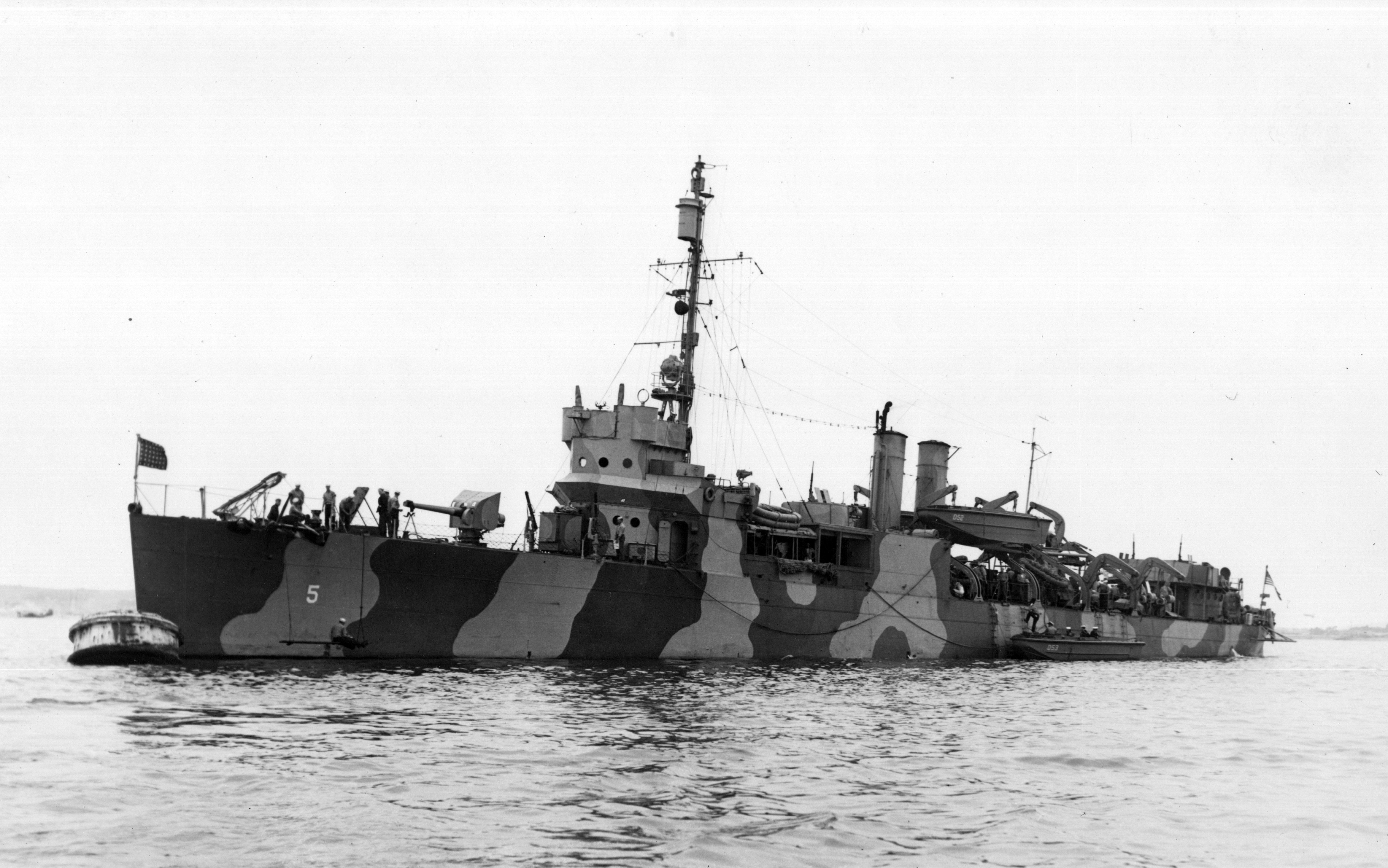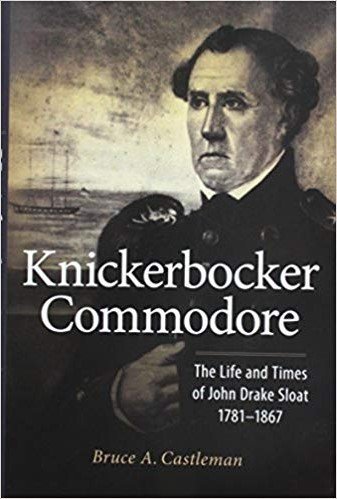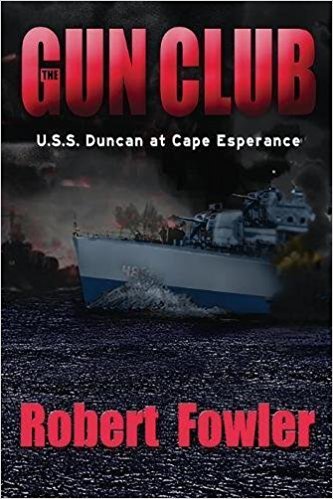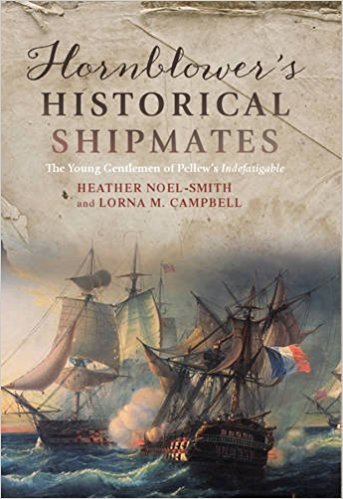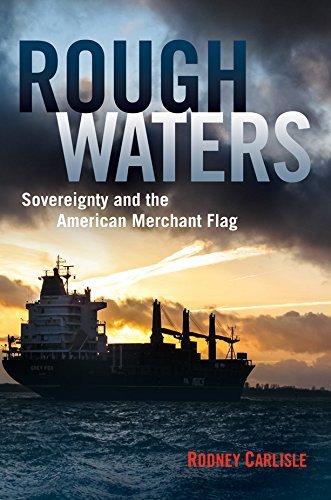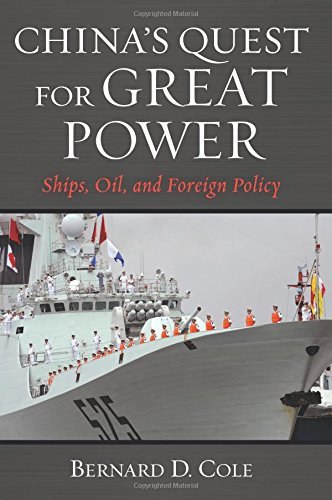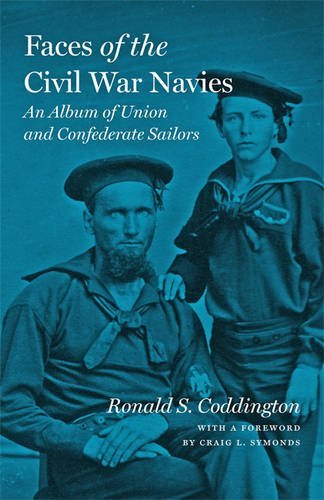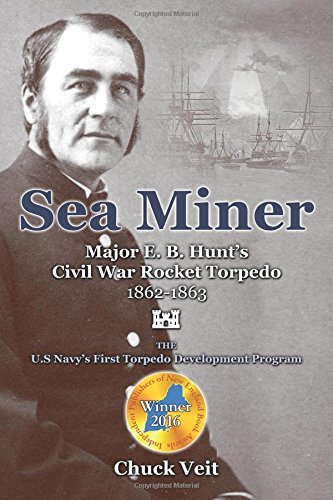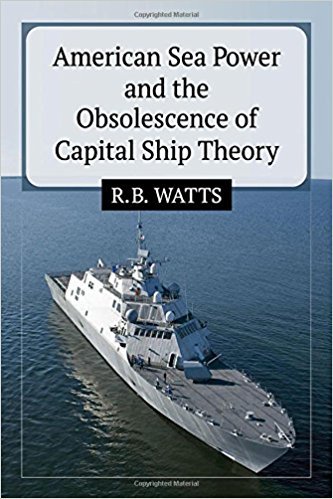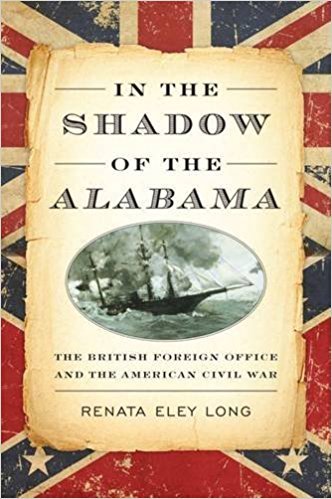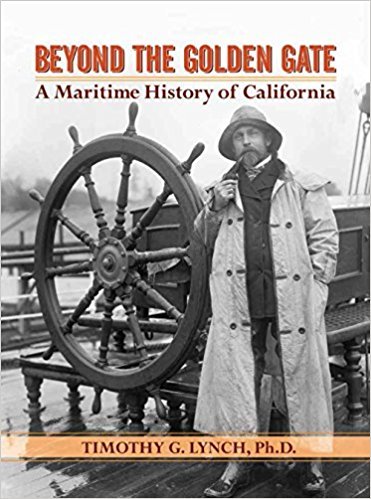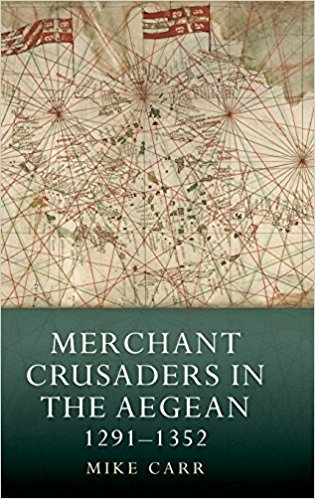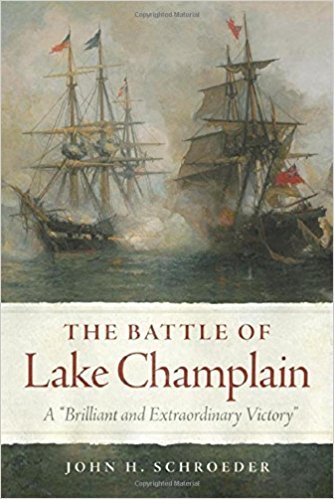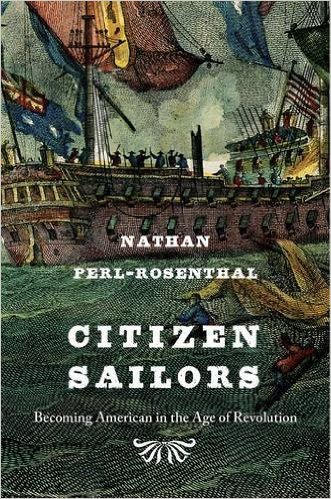-
Posts
97 -
Joined
-
Last visited
Content Type
Profiles
Forums
Gallery
Events
Everything posted by prmitch
-
The Heroic Age of Diving: America’s Underwater Pioneers and the Great Wrecks of Lake Erie By Jerry Kuntz Albany, Excelsior Editions, 2016 5-1/2” x 8-1/2”, softcover, xi + 196 pages Illustrations, notes, bibliography, index. $19.95 ISBN: 9781438459622 In his work, The Heroic Age of Diving: America’s Underwater Pioneers and the Great Wrecks of Lake Erie, Jerry Kuntz focuses on the evolution of diving in the United States from 1820-1891 with a particular focus on Lake Erie. He breaks the book into three main sections called The Pioneers (1820s-1852), The Heroic Age of Diving (July 1852-1856), and The Aftermath (1857-1891). Each section can be read on its own and stand-alone which is refreshing to see, but the reader receives the big picture through reading it in its entirety. Kuntz begins his work by discussing William Hanis Taylor and the evolution of his invention of Submarine Armor. This Submarine Armor included a cylindrical helmet and had the arms, legs, and torso covered in protective hoops of plate metal. Upon administrative changes in the company, which left William’s brother George W. Taylor in charge of the company, George joined with the Goodyear Brothers’s India rubber business. This then led to the replacing of the plate metal hoops with flexible coils of copper, over which rubber trousers would be pulled. They also composed a case of copper “for the head and shoulders, with India rubber arms attached. In front [of the helmet] is a small glass about three inches in diameter, to enable the operator to distinguish objects in the water.” These changes gave the diver more freedom to see and move around. The book moves on to discuss various wrecks that occurred on Lake Erie and the efforts involved to recover them. Of particular interest to Kuntz are the recovery efforts of the wrecks as he argues that the salvage voyages were instrumental in the development of diving equipment because of the trial and error the divers faced below the surface. For example, during the salvage of the steamer, The Erie, divers confronted many challenges such as high winds, the depth of the wreck, and equipment breaking. The book continues on to investigate pearl diving, submarines during the Civil War, and even describes an expedition to kill a monster in Silver Lake, New York. Each topic is interesting in its own right and is well presented. It is an excellent example of a popular history and who does not like a story about salvaging and searching for treasure? Kuntz begins the book acknowledging that he is neither a diver nor a naval historian, thus he frequently relied on other’s experience and expertise. He says he did this by approaching thirty-nine people who have knowledge and expertise of the subject to gain knowledge for this book.Kuntz also consulted a number of period newspaper articles, letters, and personal writings by some of the diver’s themselves such as Diving or, Submarine Explorations: Being the Life and Adventures of J. B. Green. Kuntz also uses some less reliable sources, such as Ancestry.com To conclude, the book is an interesting read, but it is likely to be better used as a good jumping off point for further research and not as concrete fact. It is more geared towards the general public who enjoy popular history as it lacks some scholarly detail, but flows well and is an enjoyable read. Ashley M. Thomas University of West Florida This review is provided courtesy of the Nautical Research Guild.
-
Knickerbocker Commodore: The Life and Times of John Drake Sloat, 1781-1867 By Bruce A. Castleman Albany: Excelsior Editions, 2016 6-1/4” x 9-1/4”, hardcover, xii + 325 pages Illustrations, appendices, notes, bibliography, index. $24.95 ISBN: 9781438461519 Sloat’s work, which focuses on an often overlooked but important military figure, is superb. Commodore John Drake Sloat was an important naval officer from the time of the United States Navy’s inception during John Adams’s administration until the Mexican-American War, or for nearly one-half a century. During that time, his rise in the ranks involved him in military actions, political intrigue and important diplomatic maneuverings. Castleman criticizes Sloat’s lone other biographer, noting that the biography is quite dated and hagiographic. Thus, Castleman seeks to fill a gap in the literature by presenting a balanced account of Sloat. This he does; although Castleman’s book is on the whole laudatory of Sloat, he does not shy away from including primary source evidence that Sloat acted dishonestly when it suited his purposes. For example, Sloat falsely claimed, in a report to the State Department, to have hosted Simon Bolivar on a trip to South America to improve his hopes of being reimbursed for actually having feted lesser-known figures. There are other instances in the book where Castleman criticizes Sloat's military tactics. Castleman’s work is enhanced by his own combination of naval experience (he was a naval commander with twenty-four years’ service) and academic training. He explains cogently and clearly concepts that might otherwise escape a reader who lacks military training or experience. His background makes him an ideal author for Sloat’s biography, for the work is really a history of the United States Navy in its first several decades. Castleman takes seriously his mandate to tell of Sloat’s “life and times.” Thus the reader learns much about the history and methods of ship-building, the politics involved in advancing in the Navy’s officer ranks, of a Naval officer’s career path when he was not aboard ship, and the effects of political decisions like the 1808 Embargo to John Fremont’s exploration of California amongst others. Sloat's career had political aspects as well. He served, for example, as the Commandant of the Portsmouth Naval Yard in between assignments at sea and developed his own administrative and political skills in that capacity. In the course of tracing Sloat’s career, the author introduces the reader to several other leading figures of the day, naval and otherwise, including Fremont, Matthew Perry, Stephen Decatur, and Simon Bolivar. Castleman’s use and evaluation of the primary source material culled from the Navy’s archives, as well as Sloat’s own correspondence, is excellent. Moreover, his command of the secondary source material is impressive. He refers aptly and easily to numerous other biographies of virtually every other major naval and political figure of the time. Finally, Castleman’s prose is direct, forceful and a pleasure to read, without the academic or specialized obscurity that mars so many specialized historical works. The story is an important one, spanning from the formation of the United States Navy to the War of 1812 to the Mexican-American War, and Castleman tells it with skill. This is an important work, quite well done and worth reading. Douglas Mock University of West Florida This review is provided courtesy of the Nautical Research Guild.
-
The Gun Club: U.S.S. Duncan at Cape Esperance By Robert Fowler Winthrop & Fish, 2017 6” x 9”, softcover, 263 pages Illustrations, maps, appendix, notes, bibliography, index. $15.99 ISBN: 9780999075302 The Gun Club tells the story of USS Duncan, a short-lived Gleaves-class destroyer that participated and sank in the first planned naval action of World War II. The author’s father, the late Lieutenant (junior grade) Robert Fowler III, was a reserve officer called into action following Pearl Harbor to serve aboard Duncan. By uncovering the real events that led to Duncan’s sinking, the book seems to be an effort to do justice to the memory of Lt. Fowler and the nearly sixty other sailors who lost their lives. Fowler describes the battle as a rude awakening for the United States Navy, which had not planned and executed a large naval battle in the forty-four years leading to Cape Esperance. In his opinion, despite officers’ planning and war-gaming, the ships, commanders, and tactics of the United States Navy in early World War II were inadequate and unprepared. The titular “Gun Club” refers to a group of Naval Academy graduates who, by 1942, were captains and admirals eager for their first taste of action and glory. The combination of their overzealous attitude and inexperience resulted in the sinking of Duncan. Following the sinking, the Navy’s culture of protecting fellow officers resulted in carefully crafted reports that avoided laying blame for any errors in judgment and obscured the facts of the engagement. Fowler uses the Duncan’s logs, personal communications, and interviews with surviving crew members to reconstruct the real timeline. The book describes everything from pre-commissioning details in New Jersey to the fateful battle near Guadalcanal only ten months later and the survivors’ return home. The result is a very detailed picture of life aboard the ship. From raunchy snippets of sailors at liberty, to grisly descriptions of battle, Fowler has clearly done his research. Fowler reconstructs scenes and dialogue in ways that are far more engaging and interesting than simple description of events. The maps and diagrams of fleet maneuvers are invaluable for understanding the complicated course of events that led to Duncan coming under a barrage of friendly fire. According to Fowler and other historians, the sinking of Duncan is primarily attributed to that friendly fire, though official reports obscure and avoid mentioning the topic. Fowler evaluates the motives and decisions that influenced the wording and content of those reports. He paints a picture of the politics and partisanship in naval command that has obscured the truth of the sinking of Duncan for so long. Fowler’s analysis of command failures and coverups is unsympathetic to the pressure the authors of those reports would have faced following the loss of a brand-new destroyer. The Gun Club is a critical and well-researched investigation into the first planned naval action of World War II. It is a valuable source for those interested in the culture of naval command early in the war and the truth behind the loss of USS Duncan. Kendra Lawrence East Carolina University This review is provided courtesy of the Nautical Research Guild.
-
British Expeditionary Warfare and the Defeat of Napoleon, 1793-1815 By Robert K. Sutcliffe Woodbridge, Sussex: The Boydell Press, 2016 6-1/2” x 9-1/2”, hardcover, xxi + 272 pages Illustrations, maps, tables, appendices, notes, bibliography, index. $120.00 ISBN: 9781843839491 The campaigns against France during the Revolutionary and Napoleonic wars were massive undertakings that required cooperation between disparate nations to achieve ultimate victory. Historians have written volumes about the various military, diplomatic, and economic endeavors required to build international coalitions and conduct military operations to face Napoleon’s martial machine. Britain’s efforts in these actions were crucial to the overall success of the coalition forces that finally brought Napoleon to heel at Waterloo. The way this was accomplished went far beyond military planning; it also required colossal logistical coordination. In British Expeditionary Warfare and the Defeat of Napoleon, 1793-1815, Robert K. Sutcliffe seeks to explain the seldom praised, behind the scenes efforts of the British military and governmental committees to coordinate the deployment and supply of the armies of Britain and its partners (in Europe and beyond) during the decades long conflict. Sutcliffe posits that these logistical efforts, despite many obstacles and setbacks, played just as much of a role as the battles themselves in securing the downfall of the man who sought to be Emperor of the World. The majority of Sutcliffe’s work deals with the role of Britain’s Transport Board in securing the shipping necessary to facilitate the movement of the tremendous amount of manpower and supplies necessary to sustain Britain and its allies in the field. He utilizes substantial primary source material—Parliamentary papers, organizational logs and records, committee reports, and official correspondence—to build his case of not only the scale and scope of the Board’s efforts, but the many bureaucratic and economic challenges, as well as the frequent official pushback that the Board faced in accomplishing its daunting missions. Often on short notice, faced with government and military officials who regularly planned operations of a scale that were seemingly impossible to achieve and that seldom fully understood the logistics involved, and obliged to attempt to balance the needs of the British economy with its military needs and the needs and wishes of the owners of the merchant vessels that formed the backbone of the transport fleet, the success of the Board in most of its missions is a testament to its organization and management. The text is filled with a dizzying array of numbers, tables, and charts that convey the immensity of the logistics involved but, coupled with Sutcliffe’s dry and matter of fact prose style, it often reads as bland as the official documents from which it is derived. There are a few moments where he is able to build excitement and drama into his prose, such as his descriptions of the British Navy’s landings in Egypt in 1801 and the campaigns along the Tagus River in Portugal during the Peninsular War, but these are few and far between. Nevertheless, British Expeditionary Warfare does indeed fill a gap in the literature of Britain’s role in the Napoleonic wars and significantly contributes to a more complete historical picture of the era. Eric A. Walls East Carolina University This review is provided courtesy of the Nautical Research Guild.
-
Ice Ghosts: The Epic Hunt for the Lost Franklin Expedition By Paul Watson New York: W.W. Norton & Company, 2017 6-1/2” x 9-1/2”, hardcover, xxxii + 384 pages Illustrations, maps, notes, index. $27.95 ISBN: 9780393249385 In Ice Ghosts: The Epic Hunt for the Lost Franklin Expedition, Paul Watson revisits Sir John Franklin’s 1845 expedition to complete a Northwest Passage through the Arctic on the ships, Erebus and Terror, with a complement of 129 men. The well-equipped voyage disappeared into the arctic landscape and despite one of the largest international search and rescue efforts in history, few traces were ever recovered. The fate of the Franklin expedition captivated people across the Victorian world and with the discovery of the expedition’s ships Erebus and Terror in 2014 and 2016, the Franklin saga was again thrust into the limelight. Watson’s book presents the next chapter in the Franklin story. Watson arranges his narrative chronologically while assessing historic and contemporary search efforts, archaeological research, and Inuit oral history regarding the expedition’s disappearance. The first half of the book describes the Victorian era and the circumstances and history of the Franklin Expedition, its loss, and subsequent search efforts. Watson weaves an epic “rich with the timeless contradictions of the human condition” (xxxi). In the second half of the book, he combines ethnography, Inuit ethnohistory, and historical archaeology to carry the reader beyond what is known historically, into the present day. Watson’s narrative credits the work of Louie Kamookak, a self-trained Inuit historian, as well as myriad scientists, researchers, and benefactors, whose devotion to solving the Franklin mystery led to the relocation of the expedition’s lost ships. Watson, a Pulitzer Prize winning Canadian photojournalist, was a member of the 2014 Victoria Strait Expedition launched by the Canadian government in a renewed effort to discover the lost Franklin ships along with any information on the fate of the expedition’s participants. The volume is an enjoyable read for Franklin scholars and general readers alike, not overly technical, while expanding upon the history as well as current scientific research. Watson’s discussion of previous underwater archaeological work in the region stresses the importance of preservation and conservation for research agendas. He makes an important and powerful argument for the value of provenance and systematic excavation. Focusing on the 1980 rediscovery of the Breadalbane, a Franklin era support vessel lost to the ice, Watson recounts the removal of the ship’s wheel and accentuates the methodological undercurrents of the contemporary historical and archaeological work being conducted in the region. A popular rather than scholarly book, Watson emphasizes the contributions of Inuit ethnohistory, but makes no mention of recent ethnographic work by scholars such as Dorothy Harley Eber, whose important volume Encounters on the Passage: Inuit Meet the Explorers was published in 2008. Additionally, Watson mentions numerous locations in the text that are not depicted on the maps he provides, making it challenging for readers new to the Franklin saga to follow the movements of not only the Franklin expeditionaries, but also the modern-day search efforts. Despite these minor shortcomings, Watson’s tale of interconnectedness, across space, time, and cultures, as well as scientific disciplines and governmental agencies is a valuable contribution to the literature of the Franklin Expedition. Christina Bolte University of West Florida This review is provided courtesy of the Nautical Research Guild.
-
Hornblower’s Historical Shipmates: The Young Gentlemen of Pellew’s Indefatigable By Heather Noel-Smith & Lorna M. Campbell Woodbridge, Sussex: The Boydell Press, 2016 6-1/2” x 9-1/2”, hardcover, xii + 248 pages Illustrations, appendix, notes, bibliography, index. $34.95 ISBN: 9781783270996 In Heather Noel- Smith and Lorna Campbell’s work Hornblower’s Historical Shipmates: The Young Gentlemen of Pellew’s Indefatigable the reader is presented with a detailed history of Captain Sir Edward Pellew’s rise through the ranks. The authors also provide brief, but detailed, summaries of seventeen of Pellew’s midshipmen who worked under him during his successful career. The authors take great care to present their audience with personable and accurate descriptions of the crew members. They depict both Pellew and his shipmates in such a way that the reader feels like they know the men and are also familiar with the culture and atmosphere of the ship at large. This is a credit to the comprehensive research and writing style of the authors. The authors’ extensive research is clear from the first page. Their in-depth use of both primary and secondary sources gives the reader a clear picture of life, across ranks, in the British Royal Navy in the late 1700s and early 1800s. Noel- Smith and Campbell include excerpts from some of Pellew’s personal correspondence throughout his life-time including his time in the Navy, passages from his journals and naval documents attached to Captain Sir Edward Pellew during his time in the service. The book presents a well-balanced and comprehensive study of Edward Pellew, not omitting the less savory aspects of his character, nor over embellishing his accomplishments. For example, the authors acknowledge how Pellew and his wife Susan Frowd Pellew went above and beyond supporting emotionally, physically and sometimes even financially, many different young men from all different stations of life. At the same time, they show how Pellew put the agenda of his sons, Pownoll and Fleetwood, ahead of the good of those serving the British Royal Navy under Pownoll and Fleetwood when he promoted both of them into positions for which they were not the best candidate. In the first chapter, they claim that Pellew is both a “partisan and patriarch” and do a brilliant job showing how these two rivaling terms describe the complex man and exceptional frigate Captain Sir Edward Pellew. Hornblowers Historical Shipmates: The Young Gentlemen of Pellew’s Indefatigable takes the reader on a unique journey where they meet not only high-ranking officials of the famous Her Majesty’s Royal Navy, but also gain access to the daily routine of the nineteenth century mid shipmen. The reader will walk away with a comprehensive view of the sailor’s devotion to their nation and their strong ties to their crew and leaders. Pellew is shown to be a flawed man, but also a relatable human being in that he was a man who felt it was his duty not only to protect his crew, but also to help them develop into mature and reliable young men who would represent their crew, family and nation. The reader is able to see how Pellew’s humble beginning and early tragedies helped him to develop into a leader who was respected and loved by his crew. Jane H. Plummer University of West Florida This review is provided courtesy of the Nautical Research Guild.
-
Rough Waters: Sovereignty and the American Merchant Flag By Rodney Carlisle Annapolis: Naval Institute Press, 2017 6-1/2” x 9-1/2”, hardcover, xii + 278 pages Photographs, tables, notes, bibliography, index. $31.95 ISBN: 9781682470091 In Rough Waters, Rodney P. Carlisle studies the emotional symbolism attached to the United States flag and its merchant marine fleet. According to the author, American naval and political figures adhered to an eighteenth century gentleman’s honor code. As a result, the language, rhetoric, and values associated with the gentleman’s honor code frame the government’s approach to national and international politics. Carlisle argues that the United States flag, as an extension of American identity, embodies the emotional, symbolic, and cultural values of the nation. Consequently, the treatment of merchant ships operating under the United States flag abroad is considered a matter of national honor. Merchant vessels occasionally ignite conflict between the United States and other global powers. The appropriate response to the insult of the flag’s honor, as per the gentleman’s honor code regarding duels, is a display of force. Nevertheless, Carlisle argues, since 1939 the United States has avoided participation in a war to defend national honor due to the change in nationality of flags on American-owned merchant vessels. In his analysis of post-Revolutionary and Antebellum maritime history, Carlisle fails to account for the other contributing political, societal, and economic factors that led to historical maritime events and military confrontations. While the argument regarding the flag and its ties to national honor as instigators of maritime conflict is compelling, the intervention of the American military in the examples used by Carlisle can be described as a nation protecting its economic interests. As is, Carlisle’s exclusion of the numerous political, economic, and societal issues that influenced maritime events and conflicts makes his examination of post-Revolutionary and Antebellum history one-dimensional. Additionally, Carlisle argues that the United States was able to remain neutral at the beginning of World War II because merchant ships owned by American corporations began to fly foreign flags. As a consequence of the flag change and transfer in registries, the American flag and national honor were not at risk at sea. It was then unnecessary for the United States to interfere when American-owned foreign-flagged ships carrying cargo to the Allies were attacked. Nonetheless, as Carlisle states, there were government officials who saw the transfer of flags and registry of ships transporting cargo for the Allies as a violation of the intent of the neutrality law, and, therefore, dishonorable. The politicians who disagreed with the decision to transfer ship registries to Panama contradict Carlisle’s argument. Thus, the United States’ maritime policies regarding trade with warring nations between 1939-1941 betray the gentleman’s code of honor that Carlisle describes. Despite these weaknesses, Carlisle presents a thought-provoking argument regarding the symbolism and national honor of the American merchant flag in connection to maritime conflicts. The text’s most noteworthy contribution to present scholarly literature is its discussion of maritime law and the “flight” of the flag. Carlisle’s book is a comprehensive analysis of the legal basis for today’s shipping industry and registry system. His discussion of the reasons and timing for the change in national flags onboard American merchant vessels is undoubtedly useful. Rough Waters, although flawed, is a valuable addition to current scholarship dedicated to the legal side of maritime history. Anna D’Jernes East Carolina University This review is provided courtesy of the Nautical Research Guild.
-
China’s Quest for Great Power: Ships, Oil, and Foreign Policy By Bernard D. Cole Annapolis: Naval Institute Press, 2016 6-1/2” x 9-1/2”, hardcover, xii + 304 pages Maps, tables, notes, bibliography, index. $34.95 ISBN: 9781612518381 Captain Bernard D. Cole examines the interrelationship of naval power, energy security, and foreign policy, as well as the significance these three elements have in China’s national security policy in China’s Quest for Great Power. Cole analyzes both the Chinese Communist Party’s (CCP) desire to maintain legitimacy, and President Xi Jinping’s domestic and foreign policies, as well as their correlation with one another, to illustrate the importance of maritime power in China’s pursuit of continued economic prosperity and energy security. Cole successfully argues that China’s drive for national security supports China’s larger goal of reestablishing itself as a central force in the Asiatic region as well as the world. Cole discusses Xi Jinping’s desire to avoid “Western values” infiltrating China, and argues that the United States is China’s main strategic concern; however, he asserts that domestic concerns will overshadow foreign concerns, indubitably, as regime legitimacy of the CCP rests in Chinese society rather than issues abroad. Cole references statements and policies released by Xi as well as Beijing’s 2015 military strategy, among other military documents, to the effect that having a strong economy supersedes naval growth for China. Yet, the navy will continue to grow as maritime power ensures energy security, which is needed for continued economic growth and domestic support of the CCP. Cole asserts that, as the People’s Liberation Army Navy’s power grows, other countries will continue to grow wary of China’s mixed soft and hard policies and its focus on its own interests in the global paradigm. Growing tension will inevitably impact China’s foreign policies and continued debates on national sovereignty. The biggest challenge facing Cole is the constraints of a book. Cole’s analysis ends with 2016, prior to the election in China. Though he provides an excellent analysis of China’s non-transparent policies, new editions of the book will be needed as time continues to pass and China gets closer to 2049, the year of China’s modernization goal, in order to understand the country’s policies as it continues to rise in power. Despite the time constraints, Cole does an excellent job explaining that the elements of naval power, energy security, and foreign policy will remain crucial in China’s national security policy as time progresses. Cole’s thorough research, paired with providing much needed attention to Xi Jinping’s periphery diplomacy and policy, results in a strong analysis of China and the country’s rise as a global force. Cole has convincing evidence in China’s words and actions to illustrate the nation’s goal in becoming a world power, though it remains focused on its domestic needs as opposed to concerns in the global paradigm. The insights provided on United States-China relations, as well as relations between China and the Asiatic region and world at large, will prove beneficial to academics; however, the style and approach will also appeal to general readers who are interested in China and China’s quest for power in the modern world. Kayla E. Green East Carolina University This review is provided courtesy of the Nautical Research Guild.
-
America, Sea Power, and the World Edited by James C. Bradford Chichester: John Wiley & Sons, 2016 7-1/2: x 9-1/2”, softcover, xxiii + 379 pages Illustrations, maps, tables, notes, bibliography, index. $39.95 ISBN: 9781118927939 Although assessments of the rise of American preeminence on the seas are not few, James C. Bradford’s America, Sea Power, and the World is an impressive treatment of the important topic. Bradford, serving as editor for the work, has mustered an impressive array of naval historians for the task, and his skill as an editor has given the book a surprisingly smooth narrative quality. Most of the authors are affiliated with the United States Naval Academy, and their expertise in each chapter is clear. Across the numerous authors, one strand of argument is apparent: the course of American history is inseparably bound to the nation’s ability to innovate and project sea power. In advancing this thesis, the authors are overwhelmingly successful in providing a useful overview for experts and casual readers alike. Bradford lays a useful base of naval history in the first chapter of the book. Though entirely predating the emergence of the United States as a sovereign nation, this chapter makes clear the connections between political power on land and sea power around the world. Once the book proceeds to its study of American sea power in particular, these early principles reappear in the close relationship between the fortunes of the nation and its navy. As the chapters progress throughout American history, no major naval episode is neglected, giving the topic sufficient coverage, even if certain areas are not explored to a sufficient depth for a specialist’s use. One of the book’s best contributions is “Defending Imperial Interests in Asia and the Caribbean, 1898-1941.” These oft-forgotten events are an important part of America’s naval story at the turn of the twentieth century, and the chapter’s author, Aaron B. O’Connell, lends the dense topic considerable clarity. Bradford has dedicated more space to the American Civil War and World War II than to other American military struggles, but this understandably reflects the large body of scholarship already dedicated to these periods. America, Sea Power, and the World will work nicely in courses surveying American naval history and will appeal to students of varying levels of familiarity with the topic. One of the book’s great strengths is its readability amid technical topics, lending it a broad readership that will undoubtedly include people outside the typical scope of professional history. Some chapters also depart from the rigid chronological framework to discuss important technological trends that cross large time periods. From beginning to end, America, Sea Power, and the World displays the unique history of American naval power at home and abroad. Despite the work’s breadth, each aspect of America’s naval history receives useful coverage. The book concludes with an exploration of the future of naval power in light of challenges to American hegemony. As Bradford’s book aptly proves, America must innovate in the midst of wearying change to maintain its position of leadership among ascendant powers. Austin Croom East Carolina University This review is provided courtesy of the Nautical Research Guild.
-
A Tale of Two Navies: Geopolitics, Technology, and Strategy in the United States Navy and the Royal Navy, 1960-2015 By Anthony R. Wells Annapolis: Naval Institute Press, 2017 6-1/2” x 9-1/2”, hardcover, xi + 250 pages Photographs, table, notes, bibliography, index. $35.00 ISBN: 9781682471203 Anthony R. Wells’s A Tale of Two Navies: Geopolitics, Technology, and Strategy in the United States Navy and the Royal Navy, 1960-2015 is an intriguing work that discusses the relationship between the United States Navy and the Royal Navy. He covers all aspects of this strategic relationship, focusing on several specific events including the emergence of the Soviet Navy, the Walker Spy Ring, and the Falklands Campaign of 1982. He also discusses the roles that Intelligence played in creating and furthering this relationship. Wells states that he hopes readers form their own ideas of events that transpired over this fifty-five year course of history and the ways that those events will shape the naval strategy of the future. The book is not a strict chronology, but an overview of themes and naval interactions. Wells’s discussion includes all aspects of the developments in technology and intelligence, the post-World War II political shifts that caused restructuring of the military, and global security issues from 1960 to 2015. He begins with an examination of the organizational changes in the navies of both nations post-World War II. While there were many changes, the United States Navy and the Royal Navy remained close, building on existing agreements and security arrangements. The author also offers his interpretation of naval strategy in the nuclear era, stressing that the Cold War remained cold due, in large part, to naval leadership of the time. Throughout the book, Wells challenges his reader to consider that events of the past could parallel future global military events. For example, the rise of a Chinese navy easily equates to the rise of the Soviet Navy post-World War II. Lessons can be learned from this regarding strategy and policy. Wells provides an engaging discussion on the strategic relationship between the United States Navy and the Royal Navy. His work is backed with an extensive bibliography, including many primary sources. This provides an excellent and useful bibliography for those interested in naval history of the Cold War period. A Tale of Two Navies is a true work of academic history, engaging readers and forcing them to think for themselves. His own service for both British and American Intelligence gives him a unique perspective on this period in history, as well as on the relationship between the two countries. Overall, Wells provides an extremely well-written and researched book on his chosen topic. His discussion is convincing and concise, and his style of writing is smooth and understandable. Additionally, the book includes an excellent section of source notes bound together by the personal experiences of the author. Wells’s work is a valuable discussion on naval partnership and strategy in the modern period. Annie Wright East Carolina University This review is provided courtesy of the Nautical Research Guild.
-
Faces of the Civil War Navies: An Album of Union and Confederate Sailors By Ronald S. Coddington Baltimore: Johns Hopkins University Press, 2016 6” x 9”, hardcover, xxxiii + 401 pages Photographs, notes, references, index. $32.95 ISBN: 9781421421360 Photographs, and the stories they tell, are rare among Civil War literature. Faces of the Civil War Navies unearths photographs, known as cartes de visite, and offers details of their origin. Both Union and Confederate navies have a rich history, although many of their contributions are not familiar to the average historical reader. The author, Ronald S. Coddington, is a photographer by trade, although his previous books testify to his abilities as a historian. His writing style offers vital details of each individual’s life. This tactic allows the author to include more soldiers and sailors, which benefits the book. The author does not include just the name of each alongside a picture, rather he covers the key aspects of their war experience. Each cartes de visite has a unique story to tell beyond the blank stare usually seen throughout Civil War photography. A compelling aspect of Faces of the Civil War Navies is the author’s choice to include both navies in the book. In doing so, he displays professionalism at the highest level free of any bias. It would be easy to mention just the Union Navy given the abundance of material available compared to their counterpart. Choosing to track down both sides exemplifies the author’s dedication to the topic. He identifies more Union figures due to the lack of Confederate cartes de visite available today, but all soldiers and sailors chronicled in the book risked their lives for a cause they deemed important. Mentioning participants from both sides allows a fuller understanding of both navies during the war. The author’s choice to incorporate all figures of rank into his book is admirable. Listing over seventy different profiles, alongside their cartes de visite, bolsters his objective further. Finding information relating to officers, while difficult, pales in comparison to that of enlisted men. The author has managed to track enlisted men’s stories through multiple avenues proving his devotion to exhaustive research. While common in historical writing, this research is unusual given the proclivities of photographers and the author’s use of cartes de visite. Faces of the Civil War Navies pursues a new angle of studying sailors of both the Confederate and Union Navies. This angle is presented in the form of cartes de visite with each one being unique from another. Photography, while not widely available during the Civil War, has become integral to the study of this particular subject. Additionally, the author displays immense passion by offering personal details connected to each cartes de visite. Placing stories along with faces provides a sense of connection to every soldier or sailor. Faces of the Civil War Navies offers an enjoyable reading experience across all levels of academia. Daniel Krentz East Carolina University This review is provided courtesy of the Nautical Research Guild.
-
Playing War: Wargaming and U.S. Navy Preparations for World War II By John M. Lillard Bethesda: Potomac Press, 2016 6-1/4” x 9-1/4”, hardcover, 210 pages Illustrations, tables, appendices, notes, bibliography, index. $39.95 ISBN: 9781612347738 John M. Lillard’s study of war games, aptly titled Playing War: Wargaming and U.S. Navy Preparations for World War II, dissects the players, game processes, and phases of wargaming during the interwar period. Wargaming proved to be a useful tool for the United States Navy in preparing for the naval battles of World War II. The wargames gave the Navy an upper hand, because they could predict movements of enemy ships based on the aforementioned games. In his attempt to prove if the war games and the Naval College had any historical agency, he delves into a previously under-explored topic. To prove his thesis, Lillard examines the impact of individual games and their players on the war effort, while also assessing the overall effects of wargaming through the inter-war period. Unlike historians such as Peter Perla and Michael Vlahos, Lillard reveals the significance of the war games to the development of technology and, ultimately, to the success of the United States Navy during World War II. Lillard first breaks down the Naval War College’s strategies and their assessments into sections. Using an assortment of charts, graphs, and images to support his thesis Lillard delivers the most in-depth study of war gaming to date. Through Lillard’s research, he found that war games were necessary to teach decision-making skills, as well as develop technology to advance the Navy. He uses speeches, diaries, and official records from the inter-war period as a primary basis for his argument. The downfall to Lillard’s sources is the focus on popular figures, such as Admiral Chester Nimitz, and the lack of voices from enlisted personnel. He does assess the data from the graduating classes, such as the number and type. He also shows the different fictional opponents throughout the wargames and provides graphics to aid in understanding for those without a military background. At times, Lillard’s argument seemed long-winded. The lack of representation by other scholars in reference to the war games could be because the argument can be summed up within a few pages. But, Lillard was able to redeem his work by providing stories that piqued the reader’s interest when facts became dull. His assessment of the early phase, from 1919 to 1927, is particularly interesting, especially when he delves into one of the later exercises in 1927. The class of 1927 worked through a game that focused on both land and sea objectives, with special situations thrown at them at every turn. The class had to adapt to changes given through the games, leading to further advancements in the games. Because Lillard uses individual games, his monograph has a narrative quality, aiding the readability of his work. While this history would be more aptly used by a military historian, the narrative aspect and the clear visual aids allow anyone to enjoy Lillard’s book. He determines that the Naval War College deserves agency within the historical context of preparations for battle, which he sums up nicely in the conclusion. Playing War is a well-written, well-researched, and well-received monograph adding a new facet to military history and the study of naval advancements. Courtney Webb University of West Florida This review is provided courtesy of the Nautical Research Guild.
-
Sea Miner: Major E.B. Hunt’s Civil War Rocket Torpedo, 1862-1863 By Chuck Veit Lulu.com, 2016 6” x 9”, softcover, 216 pages Photographs, appendices, diagrams, notes, bibliography, index. $17.00 ISBN: 9781329736382 In the realm of Civil War naval history, academic writers have generally focused on big picture topics such as biographies of naval officers and general histories, for example, James McPherson’s War on the Waters and Craig Symonds’ The Civil War at Sea. However, if one digs deeper there has been much good work done on the fringes of naval warfare by either public historians or subject matter enthusiasts. Examples abound, from the histories of torpedo warfare by Milton Perry, W. Davis Waters, and Mike Kochan, to Mark Ragan’s research on Civil War submarine warfare. Much of this fine work, including the book under review here, is self-published. While that may make it more difficult to find, the search can be well worth the effort. Chuck Veit’s Sea Miner: Major E.B. Hunt’s Civil War Rocket Torpedo, 1862-1863 is a fine example of excellent work being done in Civil War naval history. Veit is no stranger to unique and different topics, having published numerous books about Civil War history and having been keenly interested in the hunt for USS Alligator, the Union Navy’s little-known submarine. He is also a long-time living historian and President of the Navy & Marine Living History Association. In Sea Miner, Veit brings to light a little-known and long-forgotten piece of naval history, the Union attempts to design and build a self-propelled underwater torpedo. Due to the paucity of resources—Major Hunt destroyed much of his own documentation to maintain secrecy—Veit admits that some of this story relies on speculation, conjecture, or just plain educated guessing. However, he has pieced together enough documentary evidence to produce a solid history of this project. The research is impressive; the amount of primary source material used is laudable considering how much must have been destroyed. Not only does Veit show a strong grasp of the history of this project, he is able to convey the scientific and mathematical complexity of it without getting too bogged down. In fact, Chapter XI is the only chapter that reads more scientific than historical. Throughout the course of the book, Veit covers all the bases. He gives a solid biographical account of Hunt’s life, details previous efforts to design and build such weapons systems, gives a good overview of the Brooklyn Navy Yard where the project was housed, and conveys as full an accounting as possible of the Sea Miner project. He highlights the interplay and cooperation between the Army and Navy, as Hunt was on assignment from the Army to work on this project. What emerges is not simply a history of the Sea Miner project, but a book that underscores the brilliant scientific mind of Hunt. The story is primary, while many of the scientific details are left to the appendices; this allows the story to flow without becoming overly technical. Veit does allow his regional bias to show, never using the term “Civil War” outside of the book’s title. He prefers the official period designation “War of the Rebellion,” but on occasions throughout the text uses “Slaveholder’s Rebellion” and “Slaveholder’s Revolt” as well. That might not endear him to diehard Confederate apologists, but it does not detract from his excellent work. Andrew Duppstadt North Carolina State Historic Sites This review is provided courtesy of the Nautical Research Guild.
-
A New History of Yachting By Mike Bender Woodbridge, Sussex: The Boydell Press, 2017 6-1/2” x 9-1/2”, hardcover, xix + 441 pages Illustrations, notes, bibliography, index. $115.00 ISBN: 9781783271337 Being neither a yachtsman or historian, it was with some apprehension that this amateur modeler and consumer of nautical lore took up this volume. As it covers the subject of “leisure sailing” as it evolved in the early United Kingdom and Ireland, it cannot but touch upon the many elements of historical significance such as economics, politics, social systems, technology and the usual wars. Most outstanding in this context is the persistence of the class system and “hierarchies of prestige” that follow yachting right up to our own era. It is, as Bender early on notes, the original sport of kings. As a true history supported by some thirty-five pages of bibliography, the text is rich with extended quotations, enhanced by voluminous footnotes, some running to an enjoyable half page of additional facts and observations. Those of us not part of the Commonwealth would do well to have a good map or road atlas of Britain in hand. Those not familiar with yachting may also need to employ something like Royce’s Sailing Illustrated to fully understand references to the various classes and types of modern competitive racing boats. Discussions of power boats or yachts are not included. Also, this is history from the British point of view with only limited discussions of “goings on” from the American side of the pond. For the modeler there appears to be little here. There are no plans, lines or diagrams. There are only two dozen photographs and of these, only three have to do with vessels for which models or kits are commercially available, those being America , Gypsy Moth IV and Spray. A survey of the bibliography reveals a name match for about each foot of shelf space in my personal nautical collection. The additional information on Phineas Pett should be of interest to more serious modelers and plans are certainly available for the numerous boats that comprise the “home built” dingy explosion that followed World War II. Not unlike other histories Bender divides his text into sections divided by time and major events that effected them. He ends up with three “golden ages of yachting”. The industrial revolution creates new wealth and new yacht owners. The mass production of sheet plywood after World War II would create thousands of new yacht builders and owners. Oddly it was the development of railroads and the automobile on land bringing people to the shore that creates a demand for anchorages, marinas and yacht clubs. Most glaring and lasting in this account is the existence of the yacht and the yacht club as both vehicle and emblem of social class. Charles II and his many “royal” yachts begins the process that marks the yacht and yacht club membership as emblematic of elite to this day. Bender pulls no punches here. He gives full accounting to blackballing and the exclusion of working sailors, and watermen of all types and anyone of a certain gender. No women were allowed to even row in the Henley regatta until 1981. With his concluding chapters. the author offers little for the future of yachting. Too little money and too little time for sailing in the future it seems. A New History of Yachting may be the final history of yachting, thus worth reading for even more than what it says about boats. Dan Brummer Stayton, Oregon This review is provided courtesy of the Nautical Research Guild.
-
I need to thin out my book collection and am offering the following for sale. I prefer PayPal for payment but will accept check or money order. I tried to price them fairly but am open to offers. Please PM me with your requests. Prices DO NOT include shipping. Thank you, Paul --- Paul R. Mitchell Ship Modeling Books for Sale: Alexander, Caroline The Bounty, The True Story of the Mutiny on the Bounty, New York, Viking, 2003, ISBN 0-670-03133-x [like new w/dustcover], $2 Attwood, Edward L. Text Book of Theoretical Naval Architecture, London, Longmans, Green & Co., 1905 [good condition] $10 Blake, Nicholas & Richard Lawrence The Illustrated Companion to Nelson's Navy, Mechanicsburg, PA, Stackpole, 2000, ISBN 0-8117-3275-4 [soft cover, excellent condition] $8 British Shipbuilding Research Association Journal, Vol 9, 1954, bound set, ex US Patent Office Library [very good condition] $5 Chapelle, Howard I. The National Watercraft Collection, Washington, Smithsonian Institution, 1976, ISBN 0-87742-060-2 [very good condition w/ dust jacket] $5 Forester, C.S. Admiral Hornblower in the West Indies, Boston, Little, Brown and Co., 1958 [book club edition, fair condition w/torn dust jacket], $2 Lord Hornblower, Boston, Little, Brown and Co., 1946 [first edition, fair condition], $2 Young Hornblower, Three Complete Novels (Mr. Midshipman Hornblower / Lieutenant Hornblower / Hornblower of the Atropos), Boston, Little, Brown and Co.,1948-1953 [good condition w/ fair dust jacket], $5 Young Hornblower, Three Complete Novels (Mr. Midshipman Hornblower / Lieutenant Hornblower / Hornblower of the Atropos), Boston, Little, Brown and Co.,1948-1953 [fair condition w/o dust jacket], $4 Frolich, Bernard The Art of Ship Modeling: Sailing Navy 1680-1820, Piermont/Nice, Pier Books/Dupont Communications/A.N.C.R.E., 2002, [excellent condition w/ dust jacket], $65 Goodwin, Peter Men O' War, the Illustrated Story of Life in Nelson's Navy, London, Carlton, 2003, ISBN 1-84442-871-0 [excellent condition w/ dust jacket], $4 Herreshoff, L. Francis Capt. Nat Herreshoff, the Wizard of Bristol, New York, Sheridan House, 1974, [good condition w/ dust jacket], $5 Lavery, Brian Nelson's Navy, the Ships, Men and Organisation 1793-1815, London, Conway, 1989, ISBN 1-59114-611-9 [soft cover, very good condition], $14 The Arming and Fitting of English Ships of War 1600-1815, Annapolis, Naval Institute Press, 1987, ISBN 0-87021-009-2 [excellent condition w/dust jacket], $50 Lees, James The Masting and Rigging of English Ships of War (revised edition), London, Conway, 1984, ISBN 0-87021-948-0 [very good condition], $28 Lovette, Leland P. Naval Customs Traditions and Usage, Annapolis US Naval Institute, 1939 [very good condition, no dust jacket], $2 Miller, David The World of Jack Aubrey, Philadelphia, Courage Books, 2003, ISBN 0-7624-1652-1 [like new condition w/ dust jacket], $6 Morison, Samuel Eliot Admiral of the Ocean Sea, a Life of Christopher Columbus, Boston, Little, Brown and Co., 1942 [first edition?, good condition], $2 Admiral of the Ocean Sea, a Life of Christopher Columbus, Atlantic Monthly Press reprint [paperback, two volumes, excellent condition], $1 Philbrick, Nathaniel In the Heart of the Sea, The Tragedy of the Whaleship ESSEX, New York, Viking, 2000, ISBN 0-670-89157-6 [excellent condition w/dustcover], $1 Pope, Dudley Life in Nelson's Navy, London, Chatham, 1981, ISBN 1-86176-034-5 [paperback, very good condition w/some writing on inside front cover and 1st page], $1 Rosenow, Frank Sailing Craft, Boston, Sail Books, 1983, ISBN 0-914814-33-8 [very good condition w/ fair dust jacket], $2 Smithsonian Institution, National Museum of American History The Maritime Administration Collection of Ship Plans (1939-1970), catalog, [very good condition, no dust jacket] $2 Ship Plan List: Maritime Collection, catalog, [very good condition, no dust jacket] $5 Steel, David Steel's Elements Mastmaking, Sailmakingand Rigging, Edward Sweetman, NY, reproduced by photolithographic process from the 1932 edition, [very good condition with all five folding plates, no dust jacket], $55 Underhill, Harold A. Masting & Rigging the Clipper Ship & Ocean Carrier, Glasgow, Brown, Son & Ferguson, 1969 [very good condition w/ dust jacket], $8 Plank-on-Frame Models and Scale Masting & Rigging – Vols I and II, Brown, Son & Ferguson, 1974 [very good condition w/ dust jackets], $14 Sailing Ship Rigs & Rigging, Glasgow, Brown, Son & Ferguson, 1974 [very good condition w/ dust jacket], $9
-
Lascars and Indian Ocean Seafaring, 1780-1860: Shipboard Life, Unrest and Mutiny By Aaron Jaffer Woodbridge, Suffolk: The Boydell Press, 2015 6-1/2” x 9-1/2”, hardcover, xii + 235 pages Illustrations, maps, appendix, notes, bibliography, index. $115.00 ISBN: 9781783270385 This book is volume number twelve in a series of works on the East India Company. Aaron Jaffer draws upon several scholars who have previously studied the multitude of causes and effects, as well as the complexity, of mutinous events aboard sailing ships and compiles their evidence so as to give a broad, well-supported analysis of late eighteenth and early to mid-nineteenth century mutinies in the Indian Ocean. The study considers both East Indiamen and private merchant ships, referred to as country ships, that operated mainly in the Indian Ocean and South Pacific. Jaffer offers five key themes to explain mutinous events, their causes, methods, alternatives, and consequences. He makes use of an extensive list of primary sources, including private papers, court proceedings, and factory records. Jaffer also includes conclusions reached by previous scholars in similar studies and compares these conclusions with each other as well as his primary source evidence. A basic overview of each theme of the book is outlined, and expanded upon, throughout its respective chapter, including references to other studies and the specific primary material from which Jaffer draws his information. He includes differences in language, religion, culture, superstition, age, level of experience, and marital status in the causes for mutinous events, comparing the numerous examples of such acts and, when possible, the documented reasons. He discusses the different forms of protest and mutiny that have been documented, including desertion, hunger and work strikes, as well as the overthrow of power onboard. Sources and evidence for each of these protests abound and Jaffer’s writing makes that clear. Jaffer exams intermediaries aboard sailing ships and their role in events of mutiny or protest. The ranks of intermediaries included translators, overseers, arbiters, representatives of certain crew members and interest groups, and often had a hand in the finances of the ship. Each role could be, and sometimes was, easily corrupted to sway people or events for personal gain. In the event of ship seizure as the result of a mutiny or protest, of which there are many examples, the resulting status of former officers, commanders, women onboard, and the crew often fell into disorder. Jaffer acknowledges that the surviving testimonies of mutiny investigations and personal accounts are tempered with bias, skewed descriptions, and embellishments, making them difficult for historians to interpret. International politics had a profound effect on protests and mutinies onboard sailing ships in the Indian Ocean. Shifts in politics and diplomacy led to changes in regards to asylum, arrest, trial, and imprisonment. Those who intended to carry out a mutiny, primarily for personal gain, had to be aware of changes in geopolitics of the time in order to be successful. Jaffer’s work is well researched and composed, including references to other scholars’ research as well as numerous excerpts from sources close to each respective mutinous event. This volume is useful for anyone studying sailing ships and shipboard life of the late eighteenth and early to mid-nineteenth centuries. Olivia Thomas East Carolina University
-
Commemorating the Seafarer: Monuments, Memorials and Memory By Barbara Tomlinson Woodbridge, Suffolk: The Boydell Press, 2015 6-1/2” x 9-1/2”, hardcover, xiv + 259 pages Photographs, notes, bibliography, index. $50.00 ISBN: 97817843839705 Death at sea, whether through accident, or war, is often premature and unexpected. Sometimes bodies are not recovered, and people simply disappear. Although not all maritime memorials commemorate those lost at sea, perhaps this helps explain the reason, as Tomlinson notes, that maritime memorials are spread across Great Britain. According to Tomlinson, these memorials act as repositories for memory and grief, providing places for people to mourn and communicate with the dead. She also suggests that they provide information of historical and cultural importance, noting that all levels of society produced memorials affected by, and thus reflecting, such cultural forces as politics and religious as well as artistic trends. Tomlinson focuses on British maritime memorials from the sixteenth century through the modern era—from a time when only a small number of elite were honored in such a way to a broadening and democratization of commemoration to include the ordinary seaman. Ultimately, these memorials honored a wide range of people, including naval personnel, privateers, explorers, common seamen, and those lost in maritime disaster. Tomlinson states that her work concentrates on detailing artistically significant memorials, and the stories behind those monuments. Much of her study concerns naval memorials. She describes the funeral of Robert Blake, given a grand service and burial in Henry VII’s chapel in 1657. Three years later, churchmen disinterred his body, throwing it into a common grave, only to have his memory be honored in the nineteenth and twentieth centuries with stained glass windows at Westminster and a statue at his birth place in Somerset. In another, poignant example, she describes a wall monument in Westminster commemorating two junior officers. bodies lost at sea. Friends, both died in the Battle of Solebay in 1672. Tomlinson describes their epitaphs, on adjacent panels sharing a common cornice. The destruction of their ship, Royal James, is shown in relief. The vessel fought off two Dutch fireships, but was set aflame by a third. The father of one son paid for the memorial. Tomlinson also details memorials to those lost in maritime accidents. One early memorial commemorates Hugh Everard, lost, along with the entire crew of Restoration, when the vessel wrecked in 1703. Everard was only fifteen when he died. His memorial shows a sinking vessel in relief and bears the inscription Spes nulla salutis (no hope of safety). Later, Tomlinson describes memorials commemorating those lost when the ferry Herald of Free Enterprise capsized in 1987. One, in the vessel’s homeport of Dover, includes a window showing Christ stilling the waters. A wall painting in the same city depicts the baptism of Jesus by John the Baptist. The bows of the ship appear below the figure of St. John. To Tomlinson, this shows “both death and new life through water.” She notes that sculptures of sinking ships are no longer used in memorials—they too explicitly remind people of their mortality—yet sinking ships remain a reality. Tomlinson’s work is a thorough and vibrant examination of British maritime memorials, providing both an enjoyable stroll through centuries of art and history, and a reminder of human mortality. Mark Keusenkothen East Carolina University
-
Embassy to the Eastern Courts: America’s Secret First Pivot Toward Asia, 1832-37 By Andrew C.A. Jampoler Annapolis: Naval Institute Press, 2015 6-1/2” x 9-1/2”, hardcover, xv + 236 pages Illustrations, maps, notes, bibliography, index. $44.95 ISBN: 9781612514161 Andrew Jampoler’s Embassy to the Eastern Courts: America’s Secret First Power Pivot Toward Asia is a well written academic work about American diplomatic developments. His book follows the cruise of USS Peacock and USS Boxer from 1832-1834 and the cruise of Peacock with USS Enterprise from 1835 to 1837. In these two cruises, the ships travel to various Asian ports such as Manila, China, Siam, and Muscat. The first voyage marks an important diplomatic push for the United States. Edmund Quincy Roberts set sail aboard Peacock in 1832 as it was bound for Asia. His objective, however, was kept secret as then-President Andrew Jackson wanted him to attempt to secure a treaty to formalize and regularize American trade with China, Siam, and “the powers of Arabia on the Red Sea.” The concealment of his role was to prevent the British from catching wind of the somewhat nefarious scheme. Roberts was a merchant from New Hampshire, but his job was to present a letter to leaders of the various Asian countries that expressed the desire for a treaty to be signed to secure trade and to ensure the prosperity and flourishing of all involved economies. This was not the first time a rather informal and secret trade mission was executed under the Jackson administration, however. In years prior, Jackson quietly sent three commissioners to the Ottoman Empire to meet with the Sultan in order to gain access to the Black Sea trade routes. In typical Jacksonian manner, the United States Congress was not consulted in this endeavor, which was successful. Jampoler describes the voyages by various American frigates, most diplomatic in nature and all aiding in the United States’ trade endeavors. Including a general overview of the United States’ naval buildup and the qualms of Congress with regard to said buildup, the book has a very holistic approach to American diplomacy with regard to Asia. The author follows the second voyage in 1835 to Asia by Peacock and Enterprise rather closely. This voyage, which circumnavigated the globe, was plagued with misfortune, quite literally. Roberts was also aboard on this voyage, tending to more diplomatic tasks. As a result of a cholera outbreak on this ship, many of the crew died, including Roberts, which halted all diplomatic endeavors. Jampoler has done something that, in academic writing, can be very difficult. He has not only created a superbly researched and written account of a specific portion of American History, he has done it so well that even a lay person to the subject can follow along and enjoy the work without feeling at a loss. His prose keeps the reader on edge, as if reading a suspenseful novel. He relates these diplomatic missions to the world around them, which gives the reader scope. Though it reads like one, Embassy to the Eastern Courts is not a general history. More importantly, it does not suffer from common ailments that come with general histories. Jampoler has a solid thesis and ample citations, making his book an exceedingly excellent addition to academia. Jessica Rogers Kestler East Carolina University
-
God and Sea Power: The Influence of Religion on Alfred Thayer Mahan By Suzanne Geissler Annapolis: Naval Institute Press, 2015 6-1/2” x 9-1/2”, hardcover, xiii + 264 pages Photographs, notes, bibliography, index. $29.95 ISBN: 9781612518435 As described by Suzanne Geissler, Alfred Thayer Mahan lived a life devoted to God and the United States’ military. Using Mahan’s letters and a journal from his service in the navy, Geissler seeks to demonstrate the influence that Christianity played in his career, providing a detailed account of the events that influenced Mahan to be a devout Christian, renowned leader, and respected writer. As a historian and theologian, Geissler tackles this biography from a less secular point of view than previous authors, critiquing previous biographies of Mahan and providing further evidence of the influence of God in his life. Her goal is to provide an understanding on Mahan’s religious faith, its developed, its influence on his thinking, and his role within the Episcopal Church. Mahan grew up in an environment equally influenced by God and country. His father, Dennis Hart Mahan, was a graduate of West Point, a member of the Corps of Engineers, and later in life an advocate for military scholarship. Dennis Mahan was a devoted Episcopalian his entire life. Mahan’s uncle, Milo Mahan, was not only a staunch Christian but an ordained deacon and priest. Unlike his brother, Milo Mahan devoted himself to the church, serving as a professor of ecclesiastical history for many years. Clearly, Mahan's forefathers played an important role in the sculpting of his interests. Mahan and his five siblings roamed the grounds of West Point as children, maintaining strict adherence to the Sabbath. Both he and his younger brothers later served in the military. As a young man, Mahan showed interest in God and in firepower. He spent his teenage years at St. James, an Episcopal boarding school in Maryland. Later, he attended school at Columbia College in New York where he became close with his religious uncle, Milo. In autumn of 1856, Mahan entered the Naval Academy and began his journey into naval history. Geissler carefully analyses his personal writings alongside current events, spending significant time defending Mahan’s personal righteousness. Mahan appears to be a man simply struggling with his spirituality during political and military upheaval, something Robert Seager II apparently addresses with mockery and sarcasm in his biography of Mahan. At one point in Seager’s work, he suggests that Mahan was an anti-abolitionist. According to Geissler, Mahan had not developed a definitive view on slavery during the Civil War, but did know that it had to end. Despite negative views on Mahan’s personal life, none can deny the importance his writing had on the study of naval history. Mahan’s most respected contribution to the military, The Influence of Sea Power on History, 1660-1783, continues to inspire a hundred years later. For readers interested in military biographies, I strongly recommend this book. Geissler provides a new perspective into the life of a very complex man whose work continues to impact our country's navy. Her account clearly outlines the influences of religion in the life of Alfred Thayer Mahan and challenges authors who disagree with Geissler’s viewpoint. Samantha Bernard East Carolina University
-
American Sea Power and the Obsolescence of Capital Ship Theory By R.B. Watts Jefferson, North Carolina: McFarland & Co., 2016 6” x 9”, softcover, vii + 222 pages Notes, bibliography, index. $45.00 ISBN: 9780786498796 No one has been more influential in the historical development of American naval power than Alfred Thayer Mahan. At the turn of the Twentieth Century, Mahan’s theories became the basis for the U.S. Navy’s strategic development based on the capital ship, decisive battle, and command of the sea. Dr. R.B. Watts, a retired Coast Guard captain and Professor at the National War College, provides an excellent historical analysis of the U.S. Navy’s interpretation of Mahan over time and the shaping of the Navy’s strategy and force structure by that interpretation. He argues that the Navy remained consistently wedded to Mahanian capital ship theory despite the shifting threat environment. In light of post 9/11 “irregular” wars, Dr. Watts argues that the Navy has only taken very limited steps to meet the challenges of irregular warfare and remains anchored to Mahanian conventional capital ship theory; which, according to Watts, threatens to make the Navy both irrelevant and unsustainable. American Sea Power and the Obsolescence of Capital Ship Theory provides an excellent history of strategic thought and doctrinal development within the Navy since Mahan published his seminal work in 1890. Dr. Watts convincingly demonstrates that the Navy constantly adapted, but always maintained the capital ship focus in attempting to deal with changing threat environments. He very effectively demonstrates the fairly consistent disconnect between the Navy’s thought and doctrine and the actual missions it was asked to accomplish. While naval doctrine and strategy remained focused on the “blue water” fleet and the decisive battle with the Soviet Union during the Cold War, it was consistently called to deal with irregular threats in multiple environments. Watts argues that, following the fall of the Soviet Union in the 1990s, the Navy should have adjusted its strategy to meet emerging irregular threats. Dr. Watt’s coverage of the Navy’s historic struggles to match its theory to the actual threat environment is clear, cogent, and convincing. His assertions concerning post-9/11 naval strategy and his recommendations for the future, however, are more controversial and debatable. He describes navalists seeking to meet this new terrorist threat using classical naval principles, focused on forward deployed capital ships conducting strike operations against terrorists. He is overly critical of the Navy’s post-9/11 strategy in Afghanistan and Iraq, to the point of blaming the Navy and its strategy for failing to win both of those wars. Clearly a Mahanian in many ways, Dr. Watts seems to ignore Julian Corbett’s warning that wars cannot be won by sea power alone and he continuously downplays the importance of the Navy’s support to ground operations in these two land wars. Dr. Watts advocates for a more balanced and affordable force structure for the Navy and a shift in focus to include the defense of the littoral United States from irregular threats as a primary mission for the Navy. His recommendations rely on certain key assumptions: that terrorists are a strategic threat to the United States, that the terrorist seaborne threat to the United States is beyond the capability of the Coast Guard and civilian authorities, and that the forward deployed Navy is failing to meet the irregular terrorist threat. Dr. Watts’ work, due to his strong historical analysis, is a significant contribution to the ongoing debate concerning the future threat environment and the future shape, role, and missions of the United States Navy within the context of the larger joint force. Sam Rogers East Carolina University
-
In the Shadow of the Alabama: The British Foreign Office and the American Civil War By Renata Eley Long Annapolis: Naval Institute Press, 2015 6-1/2” x 9-1/2”, hardcover, xiii + 254 pages Illustrations, notes, bibliography, index. $37.95 ISBN: 9781612518367 In early 1862, the Confederate States of America desperately needed sea power. Busily launching littoral gunboats in rivers and sounds across the South, receiving foreign recognition as a legitimate power required the acquisition of a blue water navy. Confederate commissioners arrived in London and Paris just after the advent of hostilities, charged with acquisition of weapons, supplies, and financial loans to further the quest for Southern independence. Just over two months had passed since USS Monitor and CSS Virginia clashed at Hampton Roads, Virginia. Known alternately as 290 (its hull number) and Enrica, a private firm launched CSS Alabama on May 14, 1862. Union diplomats attempted to have this and other vessels intended for the rebel navy seized by crown officials. CSS Alabama, Florida, and Rappahannock succeeded in escaping and became the scourge of Federal merchantmen. In addition to its declared neutrality in the North American conflict, Great Britain’s Foreign Enlistment Act prohibited any citizen from equipping vessels as men-of-war for use against foreign powers with which Her Majesty's government was at peace. Since evidence incriminated crown officials with complicity in the escape of the Confederate ships, the American government sought damages after the end of the Civil War. The arbitration, now known as the Alabama claims, resulted in an unusual outcome which impacts Anglo-American relations to this day. Renata Eley Long created an in-depth study of the circumstances surrounding the Confederacy’s acquisition of warships. In the Shadow of the Alabama is extremely well researched. Long uncovered mistakes in the history perpetuated by previous historians. She establishes Victor Buckley’s identity early in the text. The connections of this nondescript British Foreign Office clerk build the plausibility of her case. Long meticulously presents evidence of Buckley’s central role in the affair. Finally, she connects the key players in an ever-expanding web of intrigue. In spite of its thoroughness, In the Shadow of the Alabama suffers from several deficiencies. Some details, such as the future and changing Royal titles of individuals, only serve to confuse an American audience. The book makes claims of Freemason involvement in the arbitration which followed the conclusion of the American Civil War; these are largely unsubstantiated. A brief reference to Charles Dickens is of questionable relevance and amounts solely to a distracting side note. The evidence of Buckley's involvement in the Alabama would not hold in an American courtroom. The only piece of hard evidence was presented by the same man who verified its authenticity. That same man was subsequently dismissed from the employ of the American ambassador. Its tenuous connections and shortage of evidence notwithstanding, In the Shadow of the Alabama is an interesting study. For lovers of Civil War history or international intrigue, the book delivers an exciting ride through the annals of Anglo-American relations in the nineteenth century. Much that is useful can be culled from within this story of the shadows that still gather around the most fabled Confederate warship. Dale Wetterhahn East Carolina University
-
Beyond the Golden Gate: A Maritime History of California By Timothy G. Lynch New York: Fort Schuyler Press, 2015 6-1/4” x 9-1/4”, hardcover, xii + 318 pages Illustrations, notes, bibliography. $29.95 ISBN: 9780989939423 When thinking of California, one tends to imagine the more glamorous or modern aspects of America’s most populous state. The iconic images of the Hollywood sign, the Chinese Theater, and the Santa Monica Pier often take first priority when depicting California. It is easy to forget that the glitz and glamour of Hollywood and the high-tech intellectualism of Silicon Valley are built on the back of a far more industrial history. Timothy Lynch tackles this subject by arguing that it was industrial maritime activity and culture that changed California from a sparsely populated backwater into a booming powerhouse of economic activity. Human interaction with the sea has always been a part of California’s history. Indigenous Americans were building reed boats to ply the waters of San Francisco Bay while Chumash Indians built intricate planked canoes, called tomols, to explore and exploit the waters around the Channel Islands. The arrival of Europeans to the Americas in the fifteenth century had an everlasting, and in most cases devastating, impact on native populations. From Mexico, the Spanish established missions up the coast of Alta California from San Diego to San Francisco. Despite the establishment of almost two dozen missions, California remained sparsely populated by Europeans and white Americans until the United States annexed the territory in 1848, following the Mexican-American War. Although a brisk trade in tallow, leather, and sea otter pelts was already occurring along the California coast, it was the Gold Rush of 1848 that sparked the large scale settlement and development of California. As thousands of American prospectors rushed to strike it rich, San Francisco became a booming industrial port. Lynch focuses on the rise of San Francisco as an economic and industrial center on the Pacific coast. Utilizing a large well of primary sources, Lynch is able to create a concise, yet in-depth, description of the development of California. In order to avoid being overly brief, the author sets aside space to illustrate some of the more colorful characters associated with California’s colonization. One example is a short biography of William Leidesdorff, a ship captain and the mixed race son of a Danish father and an Afro-Caribbean mother, who became one of the wealthiest land owners and politicians in early San Francisco. These short asides add to Lynch’s detailed and thorough documentation of California’s economic development that includes analysis of wide-ranging subjects such as sea otter harvesting and ship design. The only issue with Lynch’s book is its relatively narrow scope and focus. Although the subtitle professes this volume to be a “Maritime History of California,” a more accurate title would be “a Maritime History of Nineteenth Century San Francisco Bay.” While he does touch on some of the early settlements at San Diego and Monterey, these seem to be mere asides to the actual subject of San Francisco. Beyond the Golden Gate is an excellent book for anyone interested in industrial and maritime history. It is meticulously researched and provides an excellent starting point to learn about the American maritime endeavors that built and connected the United States. Conner McBrian East Carolina University
-
Merchant Crusaders in the Aegean, 1291-1352 By Mike Carr Woodbridge, Suffolk: The Boydell Press, 2015 6-1/2” x 9-1/2”, hardcover, xvi + 196 pages Illustrations, maps, notes, appendices, bibliography, index. $99.00 ISBN: 97817843839903 Mike Carr’s Merchant Crusaders in the Aegean 1291-1352 details the complex power struggles throughout the Aegean Sea during the Crusades. Carr states that the Crusades in the Aegean Sea was not simply a war between Christian and Islamic forces, but a balancing act of furthering Christian gains while trying to maintain economic stability in the Aegean Sea. Carr starts by analyzing the strategic importance of the Aegean Sea before the fall of Acre. He outlines the political, religious, and ethnic divides of the Aegean Sea and the perils of raiders and treacherous waters plaguing the region. In terms of the Crusades, Carr explains that many Christian forces at the onset of the Crusades viewed the Greeks and Byzantines as evil and, in some contemporary writings, worse than their Islamic opponents. Christian forces regularly attacked Byzantines possessions, citing that the Greeks were incapable of holding against the Islamic forces. The fall of Acre, the last port on the mainland of the Levant held by Christian forces, signaled a shift in Christian tactics in stopping Islamic expansion. A number of naval leagues formed during the Crusades between Genoa, Venice, Byzantium, the Kingdom of Cyprus, and the Papal States to patrol the Aegean Sea and intercept the numerous raids conducted by the Turks. Carr details the complex balancing act of the maritime powers in the Aegean Sea on strategies to best combat Islamic expansion while still maintaining trade. Papal orders, in many cases, conflicted with the maritime commercial wishes of the other members of the naval leagues. Carr concludes by reiterating the role that both the maritime powers of the Aegean and the papacy had in strategies to combat Turkish expansion. Carr does an excellent job of structuring his book in a concise and easy-to-follow manner that covers a wide range of viewpoints, both political and economic, while still maintaining cohesion. His method of following the perspective of certain powers, such as the Venetians, then backtracking to the beginning of his timeline to follow another viewpoint ran the risk of creating confusion, but his ability to reiterate major activities in each chapter insures that the timeline of events is not confused throughout the book. Sources for his book provide a strong foundation from which the main theme derives. Carr pulls sources from Islamic texts, such as Ibn Battuta’s account of travels through the Muslim world, as well as Christian texts, both political and economic, which range from trade license agreements to indulgences granted for crusaders in the Aegean. The wide variety of sources used, and acknowledgment of biases within those sources, ensures the greatest clarity available about the state of the Aegean Sea during the Crusades. Carr’s Merchant Crusaders in the Aegean 1291-1352 is a highly detailed account of the complex political, economic, and military events in the Aegean Sea. His analysis of various Aegean perspectives, with the addition of using a variety of primary sources and secondary research, reinforces his thesis about the way in which the Papacy and maritime powers balanced warfare against a common enemy and maintaining important trade routes to the east. This well written book will provide valuable insight to scholars who seek to understand the Crusades in the Aegean. Tyler Caldwell East Carolina University
-
The Battle of Lake Champlain: A “Brilliant and Extraordinary Victory” By John H. Schroeder Norman: University of Oklahoma Press, 2015 6-1/4” x 9-1/4”, hardcover, xiii + 164 pages Illustrations, maps, table, notes, bibliography, index. $26.95 ISBN: 9780806146935 The War of 1812 has captivated the minds of British and American citizens alike since it occurred over 200 years ago. Many scholarly works focus on the entirety of the war or the events around New Orleans in 1815. John Schroeder, a professor emeritus at University of Wisconsin-Milwuakee, a student of nineteenth-century America and its military history, successfully discusses a significant battle in the war effort. His work, The Battle of Lake Champlain: A “Brilliant and Extraordinary Victory,” places the events on Lake Champlain and in Plattsburgh, New York in the larger context of the war. Schroeder argues that the roles of the commanders and the strategies allowed for the unexpected American victory and that these events changed the outcome of the war. Schroeder strongly supports his opinion by comparing the American and British effectiveness in the battles on Lake Champlain and in Plattsburgh, the lead up to the battle, and the aftermath of the battle. In examining the commanders of the two sides, Schroeder analyzes their strengths and weaknesses and their impacts on the outcomes of the events on Lake Champlain. The American commander Thomas MacDonough, although young, was able to inspire and rebuild the naval troops on Lake Champlain as well as outsmart the British forces in the battle on September 11, 1814 by working with the other commanding officers of the American forces in the area. On the British side, George Downie led the naval forces as a seasoned naval commander from the Napoleonic Wars, yet he was new to the area during the 1814 campaign season and was unable to work with other British officers. The Americans took advantage of the confusion of the new British officers and their inability to work together. As the battle waged, the British ineffectively implemented their plan, while the Americans effectively took charge through their commanding officers and streaks of luck that played out allowing them to take the day. These same factors further affected the outcomes of the war. As Schroeder effectively describes, the outcome of this battle in the Champlain Valley allowed the Americans to successfully negotiate with a war weary Britain. Schroeder is able to support this thesis so strongly through the use of primary source evidence and battle plans. His analysis relies on the writings of MacDonough, Downie, the American and British forces, writings of the council in Ghent and numerous other sources that aid in recreating the events leading up to the battle, the battle of September 11, 1814 itself, and the results of the American victory in the Champlain Valley. Schroeder uses the appropriate images and maps to represent the battle and those involved. He, however, could have also used more images of the battle itself. Although these images would be artistic in nature, these images would offer striking examples of what the battle could have looked like and further evidence of the impact of the battle on American history. The Battle of Lake Champlain is an excellent work that compellingly argues the role of the battle in the overall position of the War of 1812 and the effect this battle had on ending the war. His use of sources offers a deeper look into the commanders themselves and the strategies that worked or did not work in the battle. Beyond exploring the Battle on Lake Champlain and in Plattsburgh, Schroeder’s work offers the necessary depth of background of the event of the War of 1812 and the complexities of its outcome. This book is a must read for anyone interested in learning about Lake Champlain and its role in the War of 1812. Allyson Ropp Lake Champlain Maritime Museum
-
Citizen Sailors: Becoming American in the Age of Revolution By Nathan Perl-Rosenthal Cambridge, Massachusetts: The Belknap Press of Harvard University Press, 2015 6” x 9”, hardcover, 372 pages Illustrations, maps, appendix, notes, index. $29.95 ISBN: 9780674286153 The American Revolution was a turbulent time that forever changed the history of the world, and its impacts were far-reaching. While history tends to focus on the experiences of colonists—as both loyalists and patriots—and the British military during the Revolution, scholarship mostly overlooks how sailors and mariners navigated this tumultuous era to gain international recognition as Americans. Nathan Perl-Rosenthal seeks to offer insight into this unique struggle of American seaman piloting global waters in order to provide their fledgling nation with much needed goods, commerce, and international connections. Perl-Rosenthal argues that American seaman held an integral role in shaping the understanding of citizenship in the United States of America and in its role as a sovereign nation that needed to defend these citizens abroad. He elucidates that early American citizenship was highly inclusive as the nation sought to secure American maritime crews composed of men from all regions, classes, and—somewhat surprisingly—races. This broad inclusivity of citizenship was meant to protect Americans at sea from imprisonment or impressment while in foreign waters or ports. However, citizenship could be difficult to prove at times, and foreign nations would do everything possible to discredit claims of American citizenship. He also clearly and effectively portrays the complicated nature of citizenship, especially in a newly formed nation that is undergoing political changes. Perl-Rosenthal makes extensive use of a myriad of sources in order to illustrate a complete picture of the American mariner’s struggle of national identity. He travelled the globe collecting sources in order to truly understand the trials and tribulations of American seaman before, during, and after the Revolution. In addition, his international scholarship incorporates the viewpoints of various nations on American sailors. These sources include naval and government records, sailors’ personal accounts, and merchant ship logs, found at the Archives Nationales in France as well as records in England and North American sites. Perl-Rosenthal deftly constructs these fragmented and unorganized personal accounts of American sailors, who travelled to far-flung ports, into a cohesive, insightful description of the struggles of American citizens at sea who had to prove their identity in order to avoid impressment at the hands of a foreign nation. Citizen Sailors is masterfully written in a narrative style that is suitable for the public as well as academics in the field. Perl-Rosenthal currently teaches as an Assistant Professor of Early American and Atlantic History at the University of Southern California with an emphasis on political history. Overall, Perl-Rosenthal succeeds in supporting his argument that American sailors were instrumental in the development of a diverse national model of citizenship, which was more inclusive than the definition of citizenship at later points throughout American history. The success of his argument resides in the use of numerous primary sources and the inclusion of illustrations that allow the reader to step back in time. Elise Twohy East Carolina University
About us
Modelshipworld - Advancing Ship Modeling through Research
SSL Secured
Your security is important for us so this Website is SSL-Secured
NRG Mailing Address
Nautical Research Guild
237 South Lincoln Street
Westmont IL, 60559-1917
Model Ship World ® and the MSW logo are Registered Trademarks, and belong to the Nautical Research Guild (United States Patent and Trademark Office: No. 6,929,264 & No. 6,929,274, registered Dec. 20, 2022)
Helpful Links
About the NRG
If you enjoy building ship models that are historically accurate as well as beautiful, then The Nautical Research Guild (NRG) is just right for you.
The Guild is a non-profit educational organization whose mission is to “Advance Ship Modeling Through Research”. We provide support to our members in their efforts to raise the quality of their model ships.
The Nautical Research Guild has published our world-renowned quarterly magazine, The Nautical Research Journal, since 1955. The pages of the Journal are full of articles by accomplished ship modelers who show you how they create those exquisite details on their models, and by maritime historians who show you the correct details to build. The Journal is available in both print and digital editions. Go to the NRG web site (www.thenrg.org) to download a complimentary digital copy of the Journal. The NRG also publishes plan sets, books and compilations of back issues of the Journal and the former Ships in Scale and Model Ship Builder magazines.

